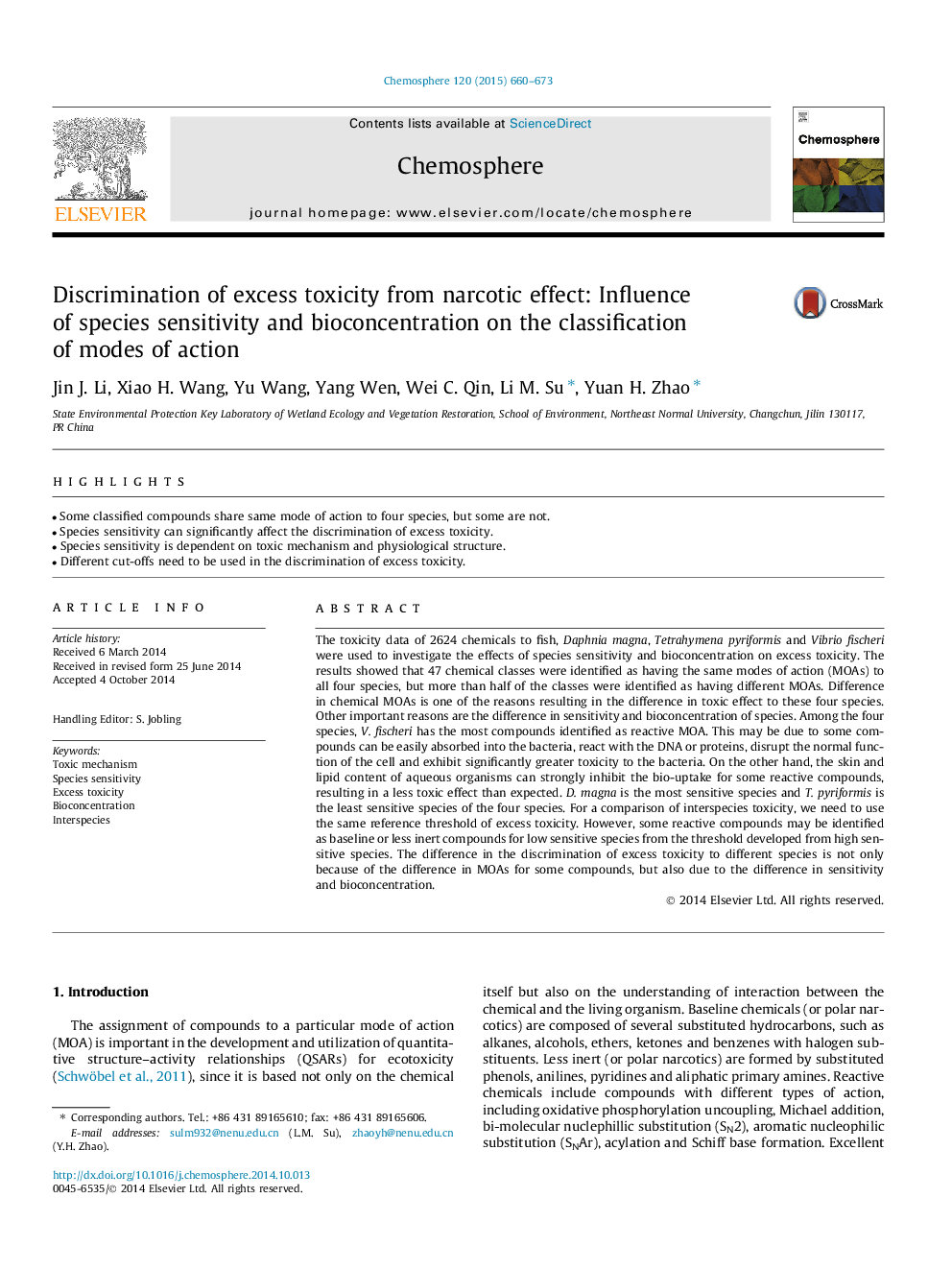| Article ID | Journal | Published Year | Pages | File Type |
|---|---|---|---|---|
| 6308299 | Chemosphere | 2015 | 14 Pages |
Abstract
The toxicity data of 2624 chemicals to fish, Daphnia magna, Tetrahymena pyriformis and Vibrio fischeri were used to investigate the effects of species sensitivity and bioconcentration on excess toxicity. The results showed that 47 chemical classes were identified as having the same modes of action (MOAs) to all four species, but more than half of the classes were identified as having different MOAs. Difference in chemical MOAs is one of the reasons resulting in the difference in toxic effect to these four species. Other important reasons are the difference in sensitivity and bioconcentration of species. Among the four species, V. fischeri has the most compounds identified as reactive MOA. This may be due to some compounds can be easily absorbed into the bacteria, react with the DNA or proteins, disrupt the normal function of the cell and exhibit significantly greater toxicity to the bacteria. On the other hand, the skin and lipid content of aqueous organisms can strongly inhibit the bio-uptake for some reactive compounds, resulting in a less toxic effect than expected. D. magna is the most sensitive species and T. pyriformis is the least sensitive species of the four species. For a comparison of interspecies toxicity, we need to use the same reference threshold of excess toxicity. However, some reactive compounds may be identified as baseline or less inert compounds for low sensitive species from the threshold developed from high sensitive species. The difference in the discrimination of excess toxicity to different species is not only because of the difference in MOAs for some compounds, but also due to the difference in sensitivity and bioconcentration.
Related Topics
Life Sciences
Environmental Science
Environmental Chemistry
Authors
Jin J. Li, Xiao H. Wang, Yu Wang, Yang Wen, Wei C. Qin, Li M. Su, Yuan H. Zhao,
